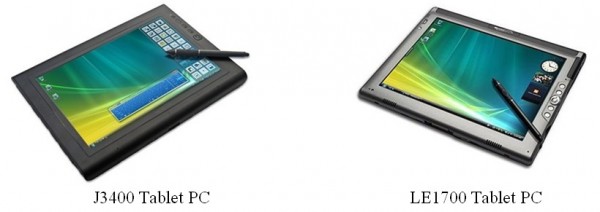9to5mac.com: “The translations are a little sketchy but the ChinaTimes is basically saying that in October, Apple will launch a $800, 10-inch tablet.  Most of this information has been published before so it isn’t certain whether or not this is a rehash of that information or from new sources. The biggest question at this point is which OSX will it run? Will it be the Mac OS, the iPhone OS or some hybrid? The iPod launches are usually in September so a iPod platform device would indicate some deviation. Also, Apple’s tablet patents seem to indicate that they are working on a full MacOS tablet.” – I really hope this is accurate, especially if the Mac tablet runs on the iPhone OS. Unfortunately the Mac tablet rumor has been floating around for years and has yet to materialize into something tangible. Those of you that know me understand my infatuation with tablet computers. The tablet platform is the perfect combination of desktop power and mobile utility. Pharmacy has yet to unlock the power of tablet computers in the clinical setting, but I believe that will change in the near future. I push my tablet agenda every chance I get.
Category: Tablet PCs
-
Motion Computing LE1700 tablet being discontinued
GottaBeMobile.com: “It looks like Motion Computing’s LE1700 days are numbered, which is unfortunate because the nice tapered design was always one of my favorites. A newsletter was just sent out saying that the LE1700 would only available while supplies last, which means they are not making any more. If interested, contact a reseller today for $100 off. ” – This really is unfortunate, the Le1700 tablet is a nice machine. We use this slate model on the floor to help our pharmacists get real time access to patient information, drug information resources, etc. It’s been a great tool for getting the pharmacists out of the physical pharmacy and out on the floor where they have a greater impact on patient care. Motion Computing will probably begin pushing the J3400 tablet PC which is tougher and faster than the LE1700.
-
Windows 7 Ink Input and Tablet PC
Tablet PCs have tremendous value in a decentralized pharmacy model. I am a big fan and have been fortunate enough to have both a Director of Pharmacy and CIO that are supportive of technology and my desire to use it. Last year our department configured two tablet PCs to be used by our critical care and pediatric pharmacists. The tablets are primarily used on rounds to gather information on patients. While utilizing the tablets the pharmacists have full access to our Siemens Pharmacy System for the patient’s medication record and crucial labs. In addition, the pharmacists can access the nursing and physician clinical systems, giving them quick access to additional information such as H&Ps, physician progress notes, nursing progress notes, finger stick results and much more. The tablets have been well received by the pharmacists.
You can imagine my excitement when my brother sent me an interesting link to a “blog dedicated to the engineering of Microsoft Windows 7.” The page contains information specific to advances to the tablet PC input experience. Improvements to the writing pad were deperately needed and the addition of text prediction on the soft keyboard will be a welcome addition. I’m looking forward to the next generation of tablet PCs. Our department has plans to roll out an additional 5 tablets over the next 12 months. Maybe I can hold out for Windows 7.
-
Batch Files to Increase Pharmacy Efficiency
Our hospital utilizes a decentralized model. One pharmacist in the main pharmacy takes care of the dispensing duties while the rest of the pharmacists are responsible for order entry, kinetics and trouble shooting in their respective areas.
The pharmacist located in the ICU typically participates in daily rounds each morning. If you are familiar with how rounding works, then you know that a pharmacist’s main job is to evaluate drug therapy based on lots of data (patient condition, diagnosis, age, gender, weight, renal status, etc). Accessing this data at the point-of-care is never easy for a pharmacist and they will often rely on the old “pen an paper†to get the job done. With all the advances in technology it just didn’t seem right for them to be doing it this way. Solution? A tablet PC.
(more…)
